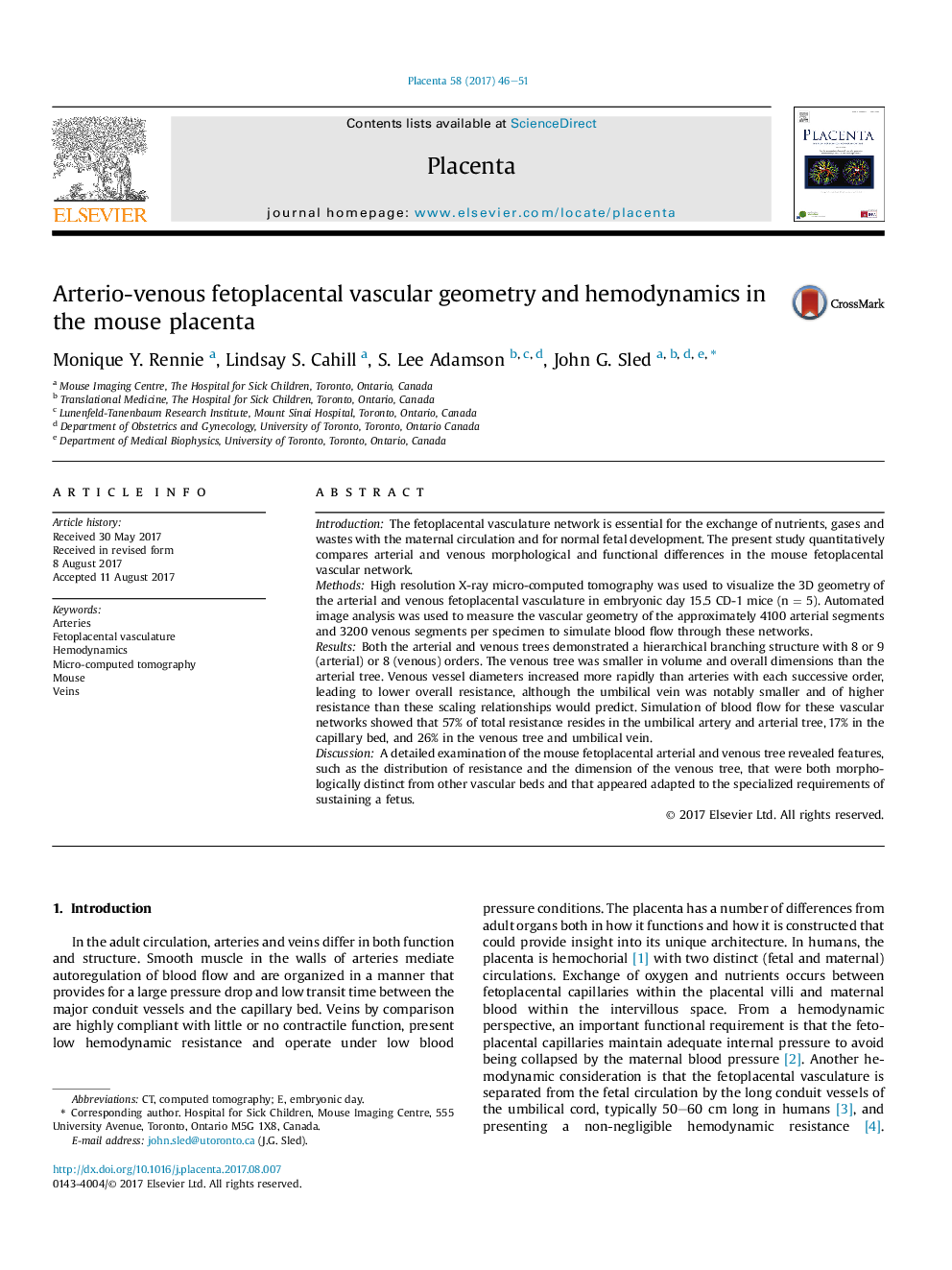| کد مقاله | کد نشریه | سال انتشار | مقاله انگلیسی | نسخه تمام متن |
|---|---|---|---|---|
| 5586143 | 1568550 | 2017 | 6 صفحه PDF | دانلود رایگان |
- Micro-CT enables modelling of both arterial and venous vascular resistances.
- Scaling rules for branching differ between fetoplacental arteries and veins.
- Veins account for a significant proportion (26%) of fetoplacental resistance.
- Number of branching generations is highly conserved across mouse placentas.
IntroductionThe fetoplacental vasculature network is essential for the exchange of nutrients, gases and wastes with the maternal circulation and for normal fetal development. The present study quantitatively compares arterial and venous morphological and functional differences in the mouse fetoplacental vascular network.MethodsHigh resolution X-ray micro-computed tomography was used to visualize the 3D geometry of the arterial and venous fetoplacental vasculature in embryonic day 15.5 CD-1 mice (n = 5). Automated image analysis was used to measure the vascular geometry of the approximately 4100 arterial segments and 3200 venous segments per specimen to simulate blood flow through these networks.ResultsBoth the arterial and venous trees demonstrated a hierarchical branching structure with 8 or 9 (arterial) or 8 (venous) orders. The venous tree was smaller in volume and overall dimensions than the arterial tree. Venous vessel diameters increased more rapidly than arteries with each successive order, leading to lower overall resistance, although the umbilical vein was notably smaller and of higher resistance than these scaling relationships would predict. Simulation of blood flow for these vascular networks showed that 57% of total resistance resides in the umbilical artery and arterial tree, 17% in the capillary bed, and 26% in the venous tree and umbilical vein.DiscussionA detailed examination of the mouse fetoplacental arterial and venous tree revealed features, such as the distribution of resistance and the dimension of the venous tree, that were both morphologically distinct from other vascular beds and that appeared adapted to the specialized requirements of sustaining a fetus.
Journal: Placenta - Volume 58, October 2017, Pages 46-51
